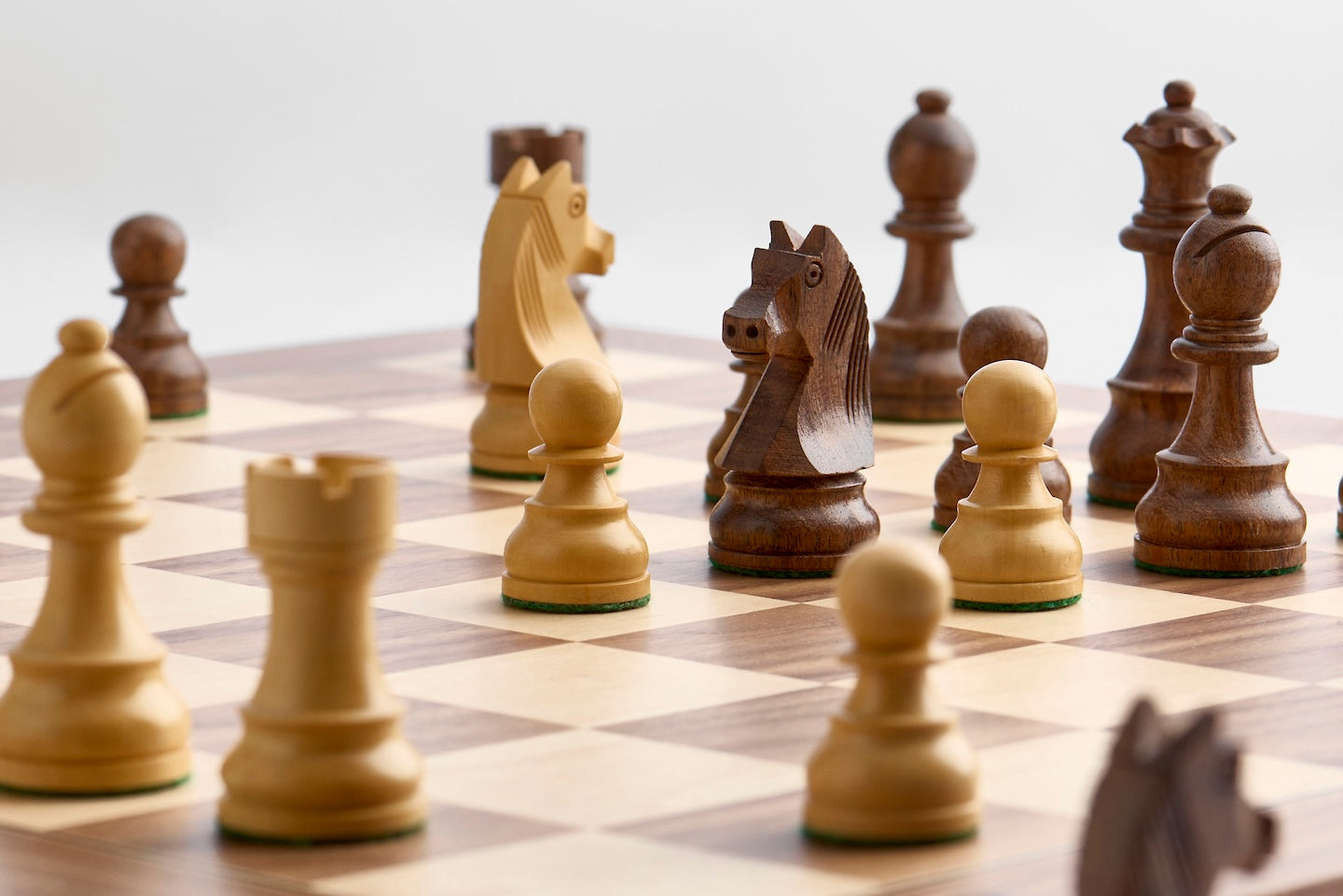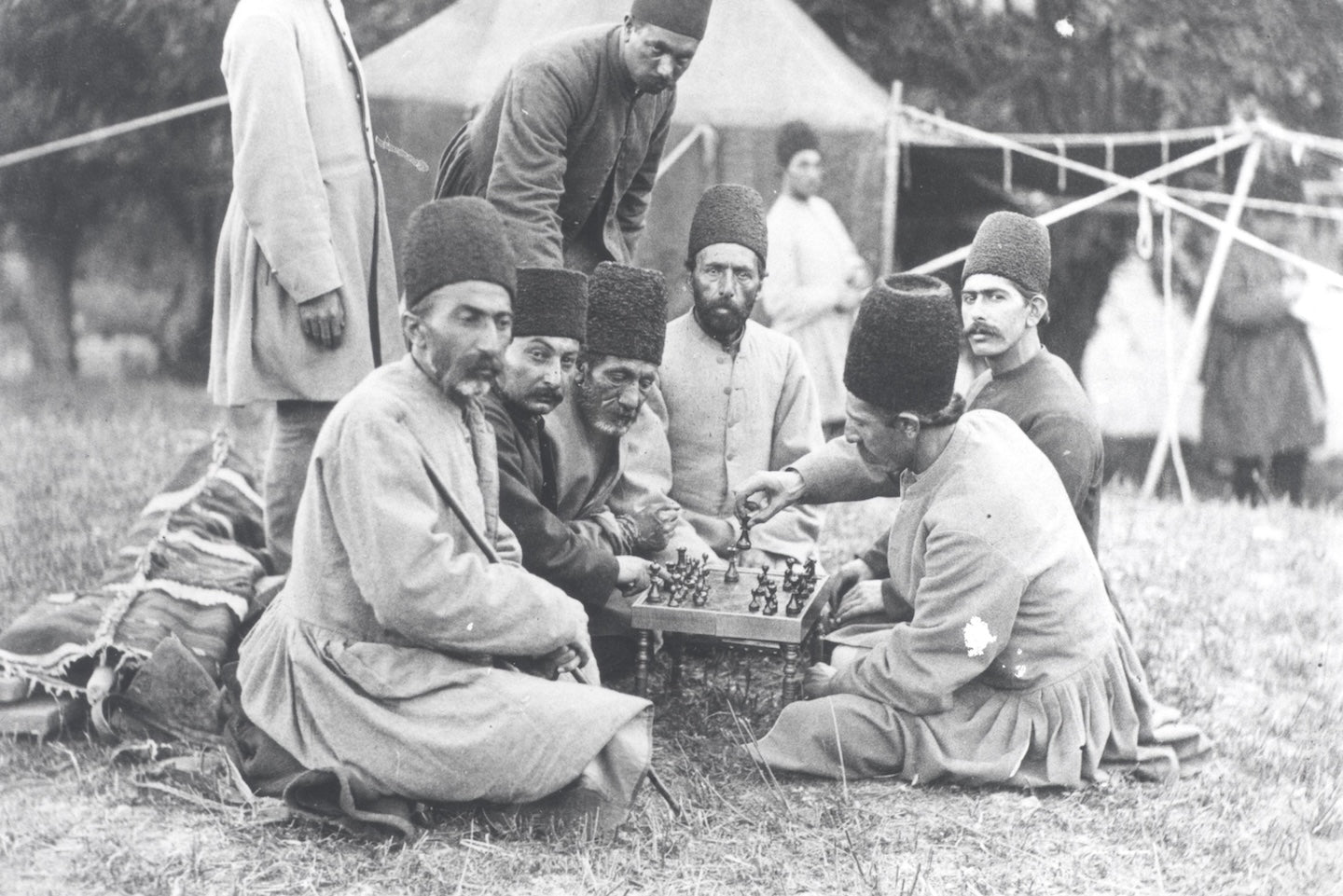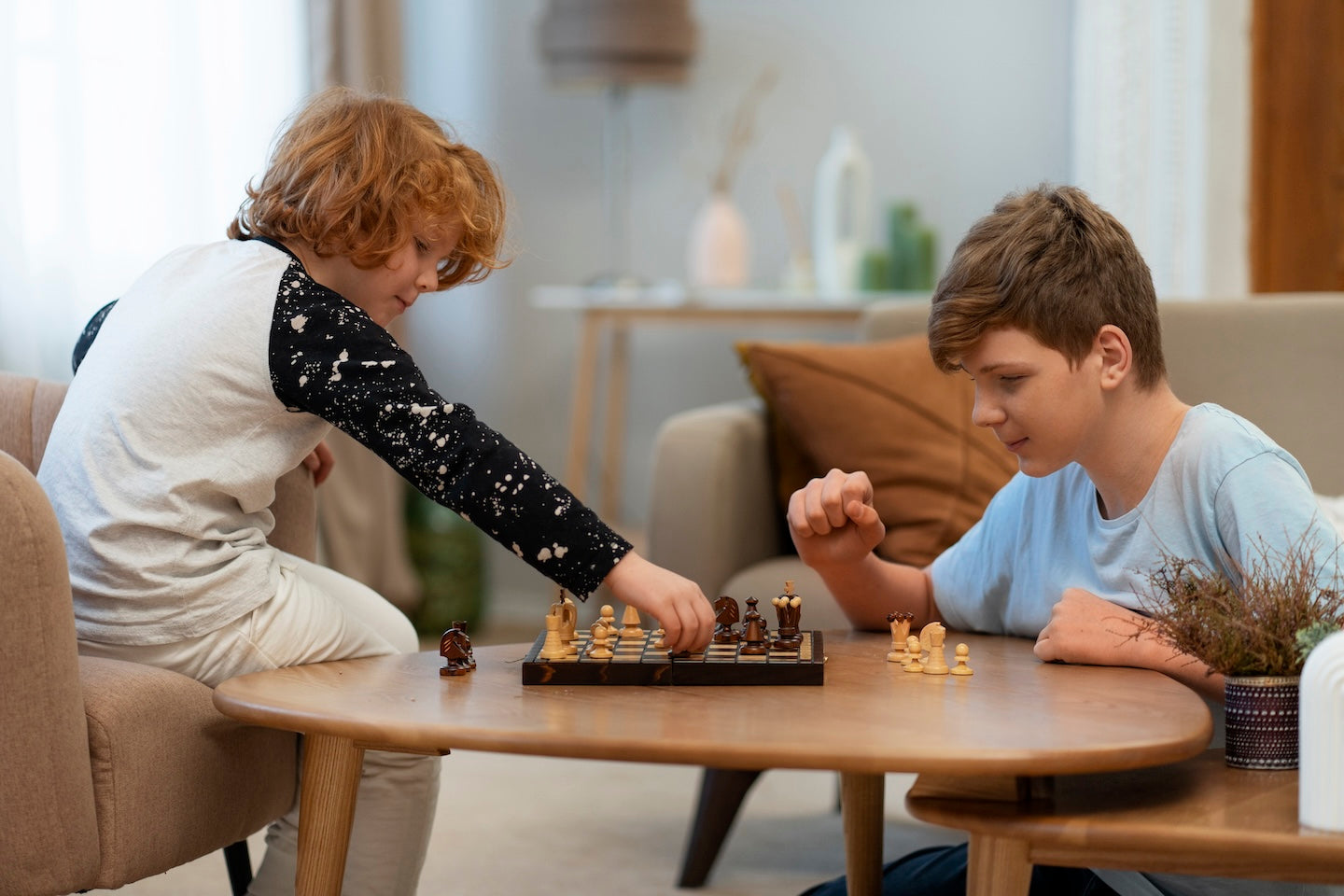
What is a good chess set?
You don't have to be a grandmaster to enjoy a good chess set. And a good chess set doesn't have to be made of marble or ivory. It must first and foremost be well thought out.
There are many ways to play chess – on your mobile, online, at a café table, in a club, in the garden, in silence, in conversation – but the classic setup with a physical board and 32 wooden pieces still has something special about it. Not only because it is beautiful, but because it makes us slow down and use our hands. A good chess set supports exactly that: making you want to come back to it.
Dimensions and proportions
A chessboard should be neither too big nor too small. There is no one right size, but a piece should have room to stand – and stay standing – on its square. Many prefer tournament size, where the squares measure 5.7–6.0 cm, and the king is about 9.5 cm high. This gives both weight and calm to the board. Chess is a slow game, and this should be noticeable.
Smaller sets – for example for travel – should be foldable and magnetic, so they are easy to pack up and take with you. However, there are special considerations: Magnetic pieces require a thinner felt on the bottom, as too thick felt weakens the grip. This means that you should always lift the pieces, not push them, to avoid scratching the board.
The proportions between pieces and squares are crucial. Too big pieces on too small squares make the game claustrophobic. Too small pieces on too large a board make it flat. A good set feels harmonious.
Materials and contrast
At Norwald, we believe that wood is the best material for chess. Not just because it's classic, but because it feels right in your hands. Wood has a warmth and variety that no plastic, marble or metal can replicate. It's alive – and it gets more beautiful with time.
At the same time, contrast is important. It must be clear what is light and what is dark – both in the pieces and on the board. Too little color play between the squares, or too little difference between the two sets of pieces, makes the game tiring to follow.
Most quality pieces are turned from hardwood – often boxwood, rosewood or acacia. The dark pieces are rarely stained, but made from darker woods. This makes a difference. Not just in the color, but in the character and durability of the surface.
Weight, durability and felt
The pieces should be weighted. Not too much, but enough to stand stable and give a sense of substance when you move them. A lightweight plastic piece can do the same thing functionally – but it feels different. And that matters if you want to play again tomorrow.
The board should be solid, but not bulky. In solid wood it has both variation and depth. Patterned veneer boards are cheaper and often nice, but rarely feel alive. The surface can be matte – especially if you play in daylight.
Both the board and the pieces must be able to withstand use. A good set must be able to withstand wear and tear – and that is precisely why many choose solid wood. It will last for many human hands over many years.
The felt on the bottom of the pieces makes a real difference. It needs to be even, glued and balanced in thickness. Too thin and the piece will be hard and jagged against the board. Too thick and it will lose its stability. In magnetic sets, the felt is typically thinner, and here you need to be extra careful to lift, not push.
Details and variation
A good chess set works as a whole. The pieces should be turned with precision and variety – but not too much decoration. When you look at a set, you should have no doubt about which piece is which.
The Staunton design, introduced in the mid-1800s, is still used by almost everyone. And for good reason. It is recognizable, balanced, and works well both visually and practically. The best sets carry on the Staunton style with a calm hand and subtle differences in design.
The pieces should be similar, but never identical. Wood is alive, and no set is exactly like the next. That's part of the charm – and a hallmark of good craftsmanship.
A final note
A good chess set is not necessarily an expensive set. But it is a set that you want to take out again and again. That provides space for the game – and for the break. That does not make noise. And that may even be allowed to stand out, even when there is no game.
Sources and read more
- The House of Staunton: Guide to chess sets
- Chess.com: Choosing the right chess set
- "Staunton Chess Sets" – The British Chess Magazine (2022)
- Norwald: How to care for your solid wood chess set



